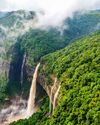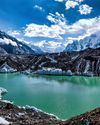
In Afghanistan, a woman dies every 27 minutes from pregnancy-related complications. At 6.5 percent (6,500 maternal deaths per 100,000 live births), the maternal mortality rate in Badakhshan Province is the highest in the world. Over the course of her lifetime, an Afghan woman’s chance of dying in childbirth or from pregnancy complications is one in eight, compared to one in 8,000 in the developed world. There is nothing poetic about these deaths; the birth of any child is a miracle, but in Afghanistan, it often comes at too high a price.
With a nominal per-capita GDP of just US$585 (International Monetary Fund, April 2012), Afghanistan is one of the poorest countries on Earth. More than three decades of conflict with forces both external and internal have ravaged what infrastructure there was, and the much-advertised influx of foreign aid rarely reaches the people that need it most: the rural poor in Afghanistan’s remote, mountainous regions, as well as women in conservative communities who rarely, if ever, leave their homes and can have no contact with men outside their immediate family.
One of the most cost-effective ways of reaching out to these isolated populations, and an invaluable weapon in the war against infant and maternal mortality, is Afghanistan’s growing army of trained midwives. In 2002, Afghanistan had just 467 trained midwives, and less than half of all healthcare facilities had any female staff. In Nuristan – albeit an extreme case – male healthcare workers outnumbered female staff43 to 1. Refusing to be seen by men, even women that could physically reach medical services could not then be treated, contributing significantly to the death rate. The World Health Organization (WHO) recommends one midwife be available for every 175 women of childbearing age. To reach this goal, Afghanistan requires almost 5,000 midwives, and for cultural reasons, the vast majority of them need to be women.
This story is from the AG 02/2020 - 141 edition of ASIAN Geographic.
Start your 7-day Magzter GOLD free trial to access thousands of curated premium stories, and 8,500+ magazines and newspapers.
Already a subscriber ? Sign In
This story is from the AG 02/2020 - 141 edition of ASIAN Geographic.
Start your 7-day Magzter GOLD free trial to access thousands of curated premium stories, and 8,500+ magazines and newspapers.
Already a subscriber? Sign In

Green Dreams
With its tea plantations and rice paddies, dense jungles and expansive forests, the region is well known as a green paradise. But many of the most impressive Asian landscapes have names you may never have heard of. Journey with us as we reveal just some of the incredible locations that make the rest of the world green with envy!

Life On The Edge
In the Chukotka Autonomous Okrug, in the remote northern Russian Far East, indigenous ethnic groups like the Chukchi and the Yupik live in the most extreme conditions, hunting seals in their traditional kayaks as they have for millennia

The Karakoram Anomaly Decoded
For decades, scientists have believed that glaciers in the Karakoram Range are defying the trend of those across the globe-resisting glacial melt due to human-induced global warming. But as we trek up the Karakoram's second-longest glacier in July, as the United Nations announces the world's hottest ever month on record, does the melting ice beneath our feet suggest the so-called Karakoram Anomaly is slowing? Or is there a ray of hope it will continue to delay the inevitable?

Green Water Revolution
Southeast Asia's Quest to Sustainable Wastewater Management in an Era of Climate Sensitivity

Green Philippines
The Philippine Archipelago may be synonymous with perfect beach holidays, but the Southeast Asian nation is also a great choice for your next ecotourism adventure

Why so Green?
From the Green Dome of the Prophet's Mosque in Medina to the fluorescent greens of flags and political campaigns, Islam has established itself as the world's \"green\" religion

Pilgrimage To Japan
The Land of the Rising Sun is as eclectic as it is fascinating, an exotic blend of ancient and modern. But two destinations in particular offer visitors an authentic taste of this unique nation: Wakayama, its spiritual centre, and Kyoto, its cultural heartland.

The Silk Road Through Uzbekistan
High-speed trains may ply some of this route today, but the historical, religious and cultural significance of the great cities of Samarkand, Bukhara and Khiva remains intact

10 Awe-Inspiring Reasons To Visit Sri Lanka
From eye-popping temples and tea estates to jaw-dropping national parks and natural wonders, the "teardrop island" has it all

Nepal: In The Shadow Of Giants
Sandwiched between China to the north and India to the south, Nepal receives influences from Asia's two major powers, but this unique land bordered by the greatest mountain range on Earth promises experiences offered nowhere else